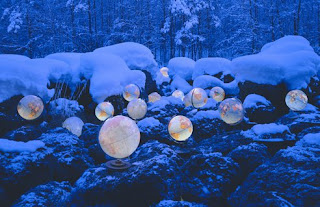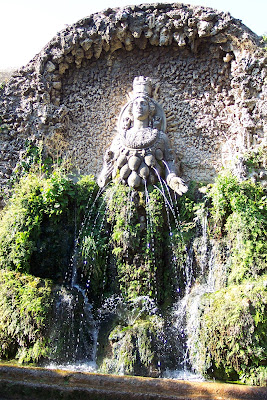Excerpt from an email to a City representative:
I heard a news bite on the CBC concerning Cemetery's in the City, and the proposal of a Pet Cemetery to bring in revenue for the City.
If you have not already, perhaps it would be prudent to further research the benefits of a Green Burial Site and the potential for a Green / Park land Cemetery in the City.
An Argument for Green burial in the City of Greater Sudbury
As far as the current system is concerned - it is out dated and high cost. Within CGS - there are 9 cemeteries that are active, and 16 that are full.
Projecting ahead one can deduce that there will eventually be 25 full cemeteries all requiring money to maintain. It is apparent that this system must change.
CGS could be a leader of this movement in Canada with only a few other programs like it.
http://greenburialvictoria.com/green-burial
Planning ahead we need to create well designed, sustainable multi-purpose spaces that cost less and provide more to the public than the current system.
The Green concept would support the City's Biodiversity Action plan http://www.greatersudbury.ca/living/environmental-initiatives/ and in my opinion presents a sustainable and forward thinking approach to the cemetery as we know it today. It costs half as much,
http://www.theglobeandmail.com/report-on-business/small-business/sb-growth/sustainability/dust-to-dust-the-case-for-a-green-burial/article4181781/ yet fees could remain on par with traditional methods - with a surplus going towards park maintenance and services. In the CGS council presentation
http://agendasonline.greatersudbury.ca/index.cfm?pg=feed&action=file&attachment=11233.pdf it specifies that "active cemeteries produce revenue", This Green approach would be a sustainable way to serve the citizens of Greater Sudbury, and avoid the further creation of a classic cemetery that takes up valuable real estate, and demands endless maintenance to the physical components that eventually weather and breakdown. It ultimately becomes "inactive", and in turn, no longer produces revenue.
With respect to a green burial site. The majority of maintenance would be associated with the Park land elements, benches, pathways, and most importantly trees and shrubs which are all encouraged to be native plant material - fertilizer and pesticide free. As cremation increases in popularity, we should be asking why? If Cremation has appealed to those looking for a more eco-friendly solution than burial, perhaps we should be looking further into green burial as an even better option.
Read more: Cremation: The New American Way of Death - LightBox
http://lightbox.time.com/2013/06/13/cremation-the-new-american-way-of-death/#ixzz2mQbTH1GI
Green burial is "greener" than cremation.
http://www.greenburialcouncil.org/faqs-fiction/
End Result
The cemetery would become a park, and offer dual purpose to a community open to embrace nature and re-greening, as well as provide beauty in an all inclusive and spiritual way.
From a logistics stand point, the city has an official plan in place that would necessitate an appropriate balance of parks and development, so perhaps the site could serve to provide some of the green space needed, while also acting as a final resting place. The space would be open and inviting and provide places to sit and enjoy nature. It would be an escape, not unlike a well designed park. Maps and GPS coordinates could be used to develop a system for people to find the location where someone is buried. Online GIS based software would work perfectly with this future green model. It could also exist as part of Sudbury's re-greening initiative.
Problems with the current systems proposal for improvements:
In the council presentation
http://agendasonline.greatersudbury.ca/index.cfm?pg=feed&action=file&attachment=11233.pdf
under the heading "Beautification program" the proposal is to:
"Introduce flower beds" to the older cemeteries - Yes this is adding to the atmosphere - but it is stuck in the old paradigm. This will require a lot of cost to maintain vs. Native plant material.
It states that we require a "Monument restoration program" - Monuments / mausoleums require far too much cost to maintain. This is a great example of why we need to look to newer ways of memorializing our loved ones.
Group monuments could be considered, small placards, integrated with sculpture, etc. Large individual monuments should not exist at all. A tree is monument enough.
Do we want to leave behind a legacy of concrete and dilapidated mausoleums and weathered tombstones, or do we want to leave behind a spiritual place full of trees and wildlife.
These issues are solved using green burial grounds. Why create environments that work against nature rather than work with it?
I believe with proper education the majority of people in Greater Sudbury (including myself) would prefer this option.
The following is taken from:
http://greenburialvictoria.com/green-burial
What is Green Burial?
Green burial is the practice where the body is returned to the earth to decompose naturally and contribute to new life.
The body is prepared for burial without embalming and is buried in a biodegradable container or shroud that might be made from sustainable, locally harvested wood, wicker, recycled cardboard or natural fibre.
Once the burial has been completed and the grave allowed to settle, then the surface of the interment site is planted with wild flowers and grasses, ferns, small shrubs and in some cases a tree.
Only plant materials that are indigenous to the local ecology are used for these plantings.
Individual memorials are discouraged; in their place simple inscriptions are made onto a communal memorial boulder.
Ultimately, when the green burial section is fully utilized, the site will become a restored forest, merging with the local eco-system.
Philosophy
Green burial is a statement of personal values for those who seek to minimize their impact on the local and global environment.
For people who have lived an environmentally sensitive life and who are mindful of the cyclical nature of life, green burial is a spiritually fulfilling ‘final act of conscience’ as an alternative to conventional burial or cremation.
Thank you for your time,
Shawn Gingrich
Landscape Designer








.jpg)


































